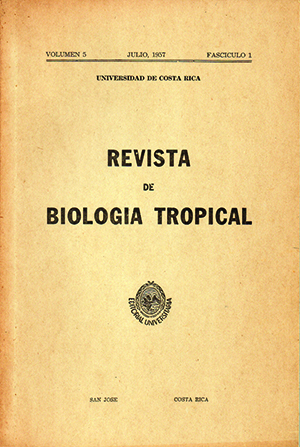Abstract
"La Quema" is one of the most important diseases of coffee trees in Costa Rica. The disease attacks young leaves, stems and fruits producing dark brown to black lesions. The causal organism Phoma costarricensis n. sp., produces globose pycnidia 100-108 (110) μ in diameter and very small pycnidiospores of 2-3 x 5-6 (7) μ. Cultures of P. costarricensis varied appreciably in regard to growth and fructification when they were maintained on media containing different carbon and nitrogen sources. A medium containing V8 Vegetable Juices enhanced fruiting of the pathogen. The fungus grew well at pH 6.0 and at a temperature of 20°C; at 30°C no growth was obtained, nor were lesions observed on inoculated stems maintained at this temperature. Wounds are required for penetration; these are generally produced under field conditions by insects. Grasshoppers Idiarthron atrispinum (Stal) are capable of disseminating the fungus. The disease does not develop during the dry season, but shortly after the start of the rainy season the disease appears. Stems and fruiting branches killed by the fungus during the previous rainy season serve as source of primary inoculum. The laboratory method for evaluating fungicides consisting in the submersion of young coffee leaves in different concentrations of fungicide solutions, wounding of treated leaves, spraying with a suspension of mycelium fragments and counting the lesions produced by P. costarricensis, presents several advantages over some usually employed for the purpose; it is easy to perform, requires little laboratory equipment, and the conditions in which it is carried out are similar to natural field conditions. Preliminary field experiments indicate that Orthocide 50-W and Tuzet mixed with Aldrin have great possibilities in controlling the disease.##plugins.facebook.comentarios##
Downloads
Download data is not yet available.






